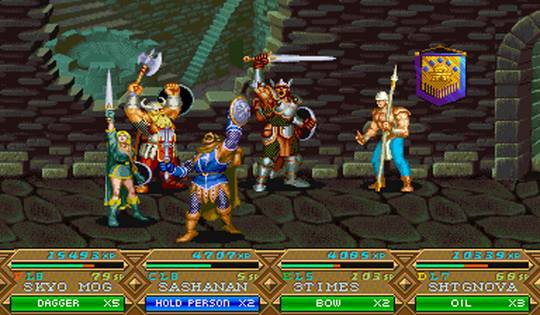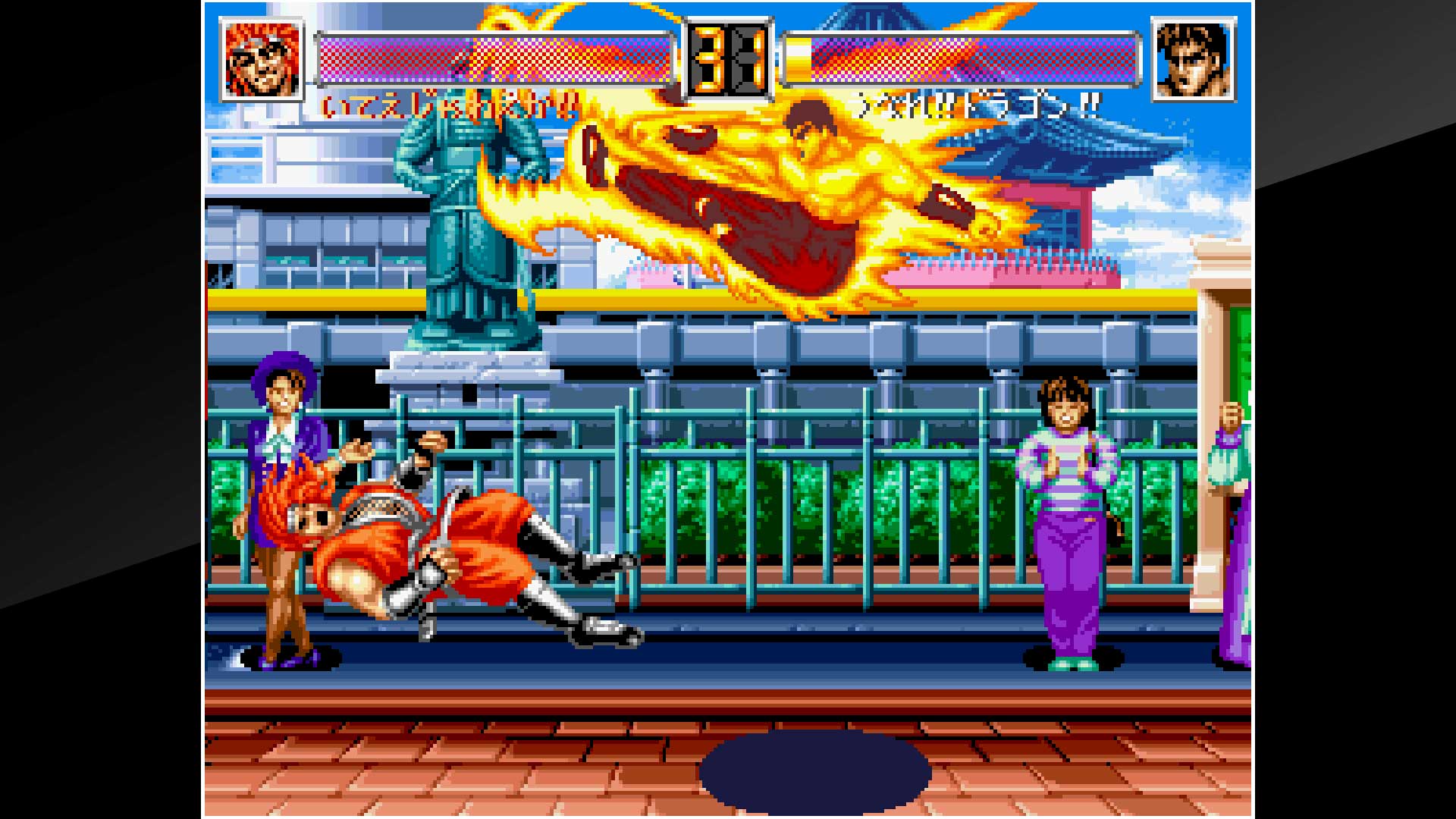If we weren’t there already, we have officially reached the peak of fighting game mania. With Mortal Kombat, Street Fighter and Fatal Fury games bringing in the players, more and more companies wanted a piece of the action. There were more fighting games being made than ever before, be it on consoles or arcades.
They didn’t even stay in the games. Fighting games were being turned into major multimedia franchises. Both Fatal Fury and Street Fighter got their own movies this year and Mortal Kombat was on the way to getting one in the following year.
With such a boom, Capcom and SNK upped their arcade production this year, so much so that I need to split it into 2 parts. It was important that they did because in 1994 there was extremely tough fighting game competition.
Some of the biggest and best fighting games came out in 1994. Games like Kasumi Ninja, Ballz 3D, Shaq Fu and one of the most highly regarded fighting games even to this day, Rise of the Robots. There was also this one game called Tekken that Namco made, but who cares about that shit.
Truth be told, I don’t think either company can make a game that can surpass Rise of the Robots, but in the comparison of Capcom and SNK’s arcade games, that doesn’t matter. Time to see what we got in this crazy, crazy year.
I was hoping I wouldn’t have to, but I had to skip Art of Fighting 2. No matter how hard I tried, no matter how much I delved into the files, I absolutely could not get Dotemu’s port to work. Not even extracting the ROM like I’d done before worked. I know the Dotemu ports are already bad, but now it wasn’t even functioning so as much as I would like to, Art of Fighting 2 will have to be skipped. Dotemu are incompetent clowns and I’m shocked they’re still around. I guess you can consider that a lose by default, but trust me. Even if Art of Fighting 2 was awesome, SNK has problems ahead.
Dungeons and Dragons:
Super Street Fighter 2 Turbo(CAP): The legendary definitive version of Street Fighter 2 for at least a decade. It doesn’t do as much for the game as Super Street Fighter 2 did, but it did make some notable tweaks, such as new command moves. This is the game that introduced Ryu’s Collarbone Breaker and Solar Plexus Strike attacks, which aren’t as iconic as the Hadouken or Shoryuken, but they haven’t left his move set since he got them.
More importantly, this is the game that introduced super attacks to Street Fighter, done with a meter built up through battle, unlike the SNK games with super attacks before it. It’s satisfying to land a hit that takes down a big chunk of your opponent’s life on principle and the big flashy background effect for finishing off your opponent with one makes you feel triumphant, but the attacks themselves are really lame. Every super attack save Akuma’s Shun Goku Satsu is just a powered up variant of a character’s special attack doing more damage and adding a little afterimage effect. They didn’t make any new animation frames to give the super attacks a distinctive flair. In Fatal Fury Special the super attacks were essentially powered up versions of a special attack too, but at least in that game they added fire and explosion effects to emphasize the power.
The speed was also increased for Super Turbo, but the game
is so smooth and balanced for the extra speed that you don’t even notice. Lest we forget, this game also introduced the
world to Akuma, a secret character who in pre-internet days was practically a
legend that very rarely did people get to see.
He was kind of like the White Ghost in
You were probably never going to get to fight Akuma though because this game has a fatal flaw. To quote Maximillian Dood:
“Long story short,
Yeah. SS2T is not a fun game to play through, unlike the previous version. It is practically ruined by this horrible, horrible glitch. The computer isn’t just hard. It straight-up cheats its ass off, doing things you can’t on the regular, taking down at least half your health with a single grab and ignoring obvious hit stun, among other such bullshit.
Apparently there was some kind of fix released later, but neither the version of the game on the 30th Anniversary Collection nor the Capcom Arcade Stadium have that version. That said, the Capcom Arcade Stadium lets you switch to the Japanese version, where the glitch doesn’t exist and that can be a pretty good time, but for this series we are judging the English versions of games and because of this glitch that should’ve been glaringly obvious before release, Super Street Fighter 2 Turbo fails. Yeah it’s still fun to play with others, but the previous version had the best of both worlds.
Pnickies(CAP): Capcom went back to the first CPS for this one and boy does it show. Pnickies is like a game made before 1990. It’s a puzzle game and a dirt simple one. Match up the not-puyos and then make them go away by putting a second star in a not-puyo blob. There’s barely any animation and no story or flavor depicted in the game beyond one side of the cabinet being an angel fighting a devil on the opposite side.
The only noteworthy aspect is that you can play competitively against another player on the same credit for one match, where the standard falling obstruction block system is used. The music is also not bad, which is good because there’s barely any at all.
Pnickies is a whole lot of nothing. It might as well be titled “Puzzle Game” for all the uniqueness it has. I might’ve dropped a quarter in if I needed a time waster, but I swiftly forget it even exists.
World Heroes 2 Jet(SNK): Contrary to the name, World Heroes 2 Jet is more of a sequel than an updated re-release, albeit one with the original game’s core baked in. The versus fighting with all the characters and their stages are still there, with new ones for the newcomers, but the single player modes are completely different.
The story goes that instead of Doctor Brown running a tournament for historical figures to fight each other, a new villain named Zeus arrives in a time travel machine to determine who is the best and defeat them so that he may conquer history.
The villain is made known from the start this time and he looks quite familiar in two ways. For starters, rather than being a historical figure, similar to the previous final bosses he’s based on a fictional figure: Kaioh from Fist of the North Star and let me tell you, a fighting game where Bruce Lee can fight Kaioh teamed up with Jack the Ripper and Lu Bu has to be one of the most instantly greenlit ideas you could come up with.
The other familiar thing about Zeus is that when he’s in his suit he bears an uncanny resemblance to Spider, the villain from Ninja Commando who also tried to conquer history with time travel. If it’s supposed to be the same guy that’s a pretty great crossover concept.
The real story is told through the game’s new tournament mode. The other mode is just fighting a few opponents of your choice and then getting an ending saying it was all training for the main story that is the tournament mode. As lame as that sounds, being able to choose which computer opponents you want to fight is practically a foreign concept for an arcade fighting game even today. That’s usually something you can only do in console ports and even then it wasn’t commonplace for over a decade after this game.
In the much meatier tournament mode you go through a series of fights against teams of 3 in which you only have to win 2 out of 3 one-round matches against each to proceed. After a few of those you fight a series of traditional fights with the John Cena-type superstars of the games thus far before proceeding to Zeus’ castle to fight him and his entourage as well.
First, the idea of best 2 out of 3 matches with a different opponent in each round is a great concept because it lets you fight the entire cast in quick succession so the game can move at a good pace. If you wanted to fight them more, the other mode is there for that. Second, the presentation is once again great. Cutscenes are some of the biggest and flashiest from either company, even if the English translations don’t match the quality, and brand new stages on par with the rest were made for this new mode. This game excels in its visuals.
The “Jet” in the title is meant to imply that the game moves a little bit faster than before, but I barely noticed. What I did notice was a new, even easier difficulty option that makes the computer opponents bearable to play against. Sure we lost the cool deathmatch mode with the stage hazards, but the sacrifice was worth it for a better fighting game. This one’s ok.
Alien vs. Predator(CAP): You’d be mistaken for thinking that
this was another licensed Alien vs. Predator game like the others that vary in
notability and quality, but this has to be one of the best. Though not quite as in-depth as
Alien vs. Predator flexes the CPS2 system’s ability to render a lot of sprites onscreen too, even more than Warriors of Fate. Right from the start you’re fighting veritable armies of those two-mouthed suckers, but since they go down faster and you’re given powerful tools to take them down in large numbers, the game goes at a good pace, helped by the plentiful story sequences. It kicks ass and really shows how much Capcom hit their stride in making beat-em-ups. If you ever find this one in an arcade, you have to play it. You’ll make me sad if you don’t.
Eco Fighters(CAP): In the future, mankind enters an age of prosperity through the use of natural resources from planets across space. However, the biggest enterprise, Goyolk, is exploiting the resources to the point of turning them into “dead spheres”. Who do you call to deal with such dastardly villains?
Actually I think Gaia threw up her hands and gave up with the galactic-scale pollution so now it’s up to two kids in repurposed space ships to take Goyolk down, starting with their polluting operations on the planet Elwood.
Capcom brought back the rotating knob from Lost Worlds for this one. The ships have a rotating arm that can hold weapons that act as a shield and a gun, kind of like the one in Varth. This time, however, the Capcom Arcade Second Stadium allows the option of adjusting the arm with the right stick to make it a twin stick shooter, giving it more of the precision you might’ve gotten with the knob.
Eco Fighters shows off the CPS2’s power with big, nicely-animated sprites and metric ass tons of enemy fire. It becomes more and more of a bullet hell shooter as it goes along, which makes using the arm as a shield come in handy, but with how overwhelming it can get, it would have benefited from a screen-clearing super move for some relief like previous shooters had. It’s a competently made shooter regardless.



No comments:
Post a Comment